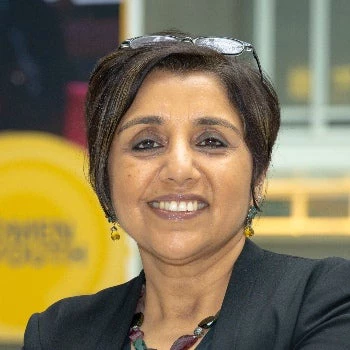 The re-use, re-manufacturing, and recycling of products in a circular economy offers a promising path for sustainable economic growth. Copyright: Mariia Korneeva/Shutterstock
The re-use, re-manufacturing, and recycling of products in a circular economy offers a promising path for sustainable economic growth. Copyright: Mariia Korneeva/Shutterstock
As countries respond to the pressing challenges of climate change and environmental degradation, the re-use, re-manufacturing, and recycling of products in a circular economy offers a promising path for sustainable economic growth.
Renewable energy, water treatment, textiles, electronics, and ICT recycling, and industries that reuse organic materials are key to the circular economy. While the green potential of circular models is clear, less attention has been paid to their human impacts. Unlocking the gains of the circular economy requires a win-win approach that addresses environmental concerns while securing access to good jobs within and across countries, especially for youth in developing countries.
Responding to this need, the World Bank’s Solutions for Youth Employment (S4YE) has partnered with the ILO and Circle Economy to launch the Jobs in the Circular Economy Initiative. This partnership bridges gaps in existing research through collaboration with an international community of research institutions, industry representatives, and governments.
Opportunities in the circular economy
Here are four key opportunities in the circular economy — and why people should be at the center.
1. The circular economy can deliver on the dual goals of achieving sustainable growth and creating more jobs. Greener approaches to prosperity are critical amid growing environmental degradation. And while circular models can advance greener goals (Figure 1), they can also drive job creation, providing a double dividend that benefits both the environment and workers. In fact, S4YE notes the potential of circular models to create an estimated 6 to 20 million jobs worldwide. As economies transition to circularity, a circular value chain allows for systematic waste reduction while creating potential jobs along the chain (Figure 2). Furthermore, circular activities such as recycling, reuse, and repair are labor-intensive and can act as important drivers of employment, especially for entry-level job seekers.
Figure 1: Potential of the Circular Economy

Figure 2: Linear Value Chain to Circular Value Chain

2. The green agenda must ensure youth involvement – and jobs for young people. Millennials are set to comprise 75% of the global workforce by 2025. Youth play an important role in securing an eco-friendly future, matching increased spending power with more environmentally friendly consumption patterns. Additionally, the shift to circularity will involve digital technologies that already see significant youth participation. Circular activities can generate entry-level jobs with lower skill requirements (Figure 3), essential for youth, especially in vulnerable communities.
Figure 3: Bifurcation of Skill Intensity by Type of Circular Activity/Job

3. At the same time, making jobs part of the circular agenda can spotlight opportunities to curb existing inequalities while addressing unintended risks to worker welfare. The green agenda must not assume that jobs that are “good for the environment” are automatically also “good for workers.” The S4YE Discussion Note highlights how labor-intensive circular activities mainly occur in the informal sector, especially in the developing world. Such work is characterized by low pay, hazardous conditions, seasonality and is disproportionately carried out by marginalized groups. Sufficient regulations and social safety nets are usually lacking. As an example, cobalt mining in the Democratic Republic of Congo supports the electric vehicle sector while exposing workers to dangerous conditions and toxic materials, thereby offering “brown jobs in a green industry.” A greener economy should prioritize people and inclusivity, ensuring that newly created green jobs offer safer and more humane working conditions with fair pay.
4. Circular economy initiatives should consider impacts on developing countries. While attention on the circular economy has been focused on developed countries, the circular economy’s potential job creation is projected to be unevenly divided within and across regions, with most jobs concentrated in Europe and Latin America and the Caribbean and fewer across Asia and the Pacific, Africa, and the Middle East. The harsh working conditions that characterize many less skills-intensive green jobs are concentrated in the Global South, in countries where regulation and enforcement is inadequate. Concerns over the export of waste dumping from developed to developing countries also highlight how the gains from the circular economy might disproportionately favor the Global North at the expense of people in developing countries.
Collaborating for a sustainable and inclusive circular economy
Advancing the circular economy agenda and ensuring that it is sustainable and inclusive will necessitate broad collaboration. In order to identify opportunities while managing unintended risks, we must adopt an intentional approach guided by better evidence on the promise and pitfalls of the circular economy. Realizing the full economic and developmental potential of the circular economy requires putting people at the center.
To receive weekly articles, sign-up here




Join the Conversation